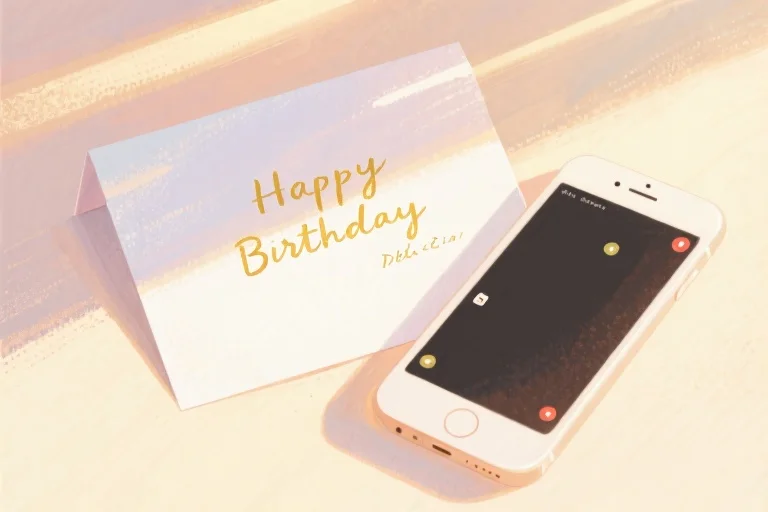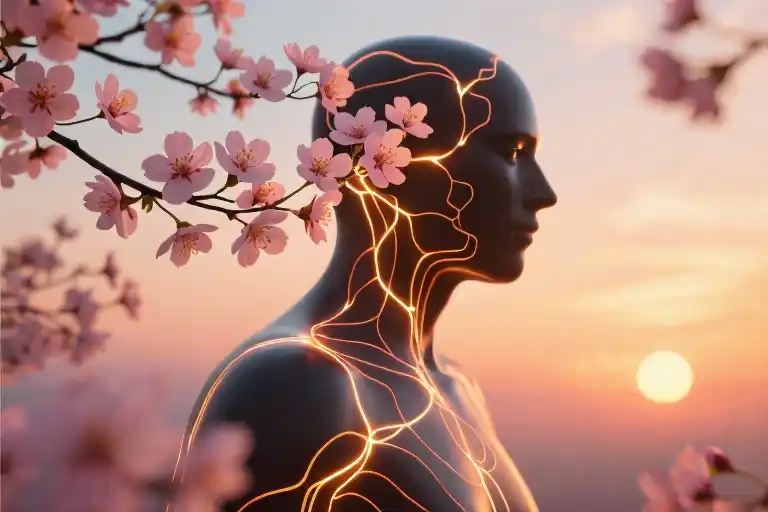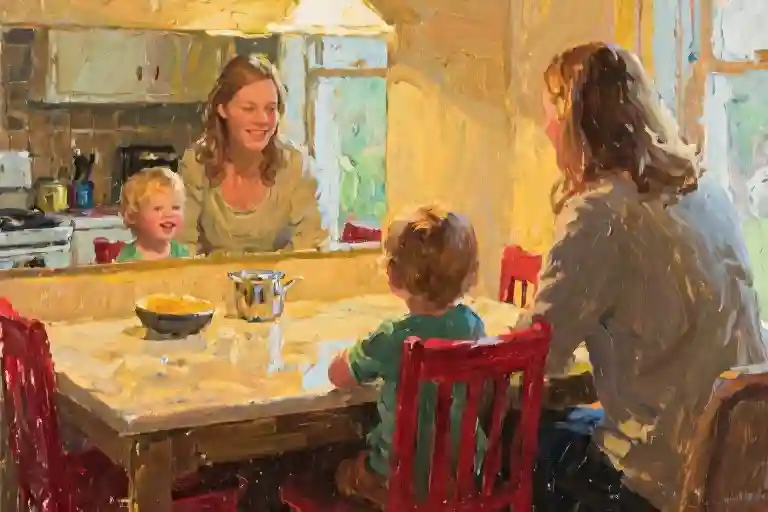The morning light filtered through my curtains on my 30th birthday, casting geometric patterns across the handwritten envelope resting on my nightstand. The familiar slant of my college roommate’s handwriting—those looping ‘g’s and dramatic ‘y’s—triggered an immediate warmth in my chest before I’d even broken the seal. As I unfolded the three-page letter (complete with coffee stains and crossed-out words she’d forgotten to erase), the scent of her favorite bergamot ink transported me to our dorm room days.
This quiet, paper-and-ink moment stood in stark contrast to my 25th birthday, when my phone had buzzed relentlessly from dawn till midnight. Back then, my lock screen flashed with 237 unread messages—a meteor shower of emoji explosions.
The Evolution of Birthday Messages: From Quantity to Quality
The notification chimed at 7:03 AM—right as my morning coffee finished brewing. It was a voice message from Clara, my college roommate who now lives in Oslo. Her familiar laughter filled my kitchen as she sang an off-key rendition of “Happy Birthday” in Norwegian, followed by a heartfelt two-minute reflection on our decade of friendship. This stood in stark contrast to five years ago, when my phone would have already been buzzing with fifteen generic “HB!” texts from acquaintances by this hour.
The Data Tells the Story
Tracking my birthday messages since turning 25 revealed an undeniable pattern:
| Age | Total Messages | Average Word Count | Midnight Messages |
|---|---|---|---|
| 25 | 87 | 4.2 | 22 |
| 28 | 53 | 12.7 | 9 |
| 30 | 31 | 28.9 | 3 |
Two phenomena emerge:
- The Great Filtering: Message quantity decreased by 64% over five years
- The Depth Expansion: Average message length increased nearly 7-fold
Case Studies in Intentionality
The Contrast:
- Former Colleague: A LinkedIn notification with the auto-generated “Congrats on your birthday!” banner (sent to his 500+ connections)
- Childhood Best Friend: A 17-minute video compilation featuring our friends from three continents, edited over two weeks with inside jokes from 2004
This shift isn’t about popularity—it’s about cognitive realignment. As psychologist Dr. Marisa Franco’s research shows, adult brains naturally optimize for relationships that provide:
- Emotional reciprocity
- Shared history
- Growth alignment
The Neurosocial Explanation
Our social capacity operates like smartphone storage:
- RAM (Active Relationships): Limited to ~15 people we regularly confide in
- Internal Storage (Meaningful Connections): Holds ~50 relationships we actively maintain
- Cloud Backup (Dormant Ties): Thousands of connections awaiting context to reactivate
Birthdays function as annual system diagnostics, revealing which connections still have active permissions to our emotional bandwidth. The messages that survive this natural selection process aren’t just greetings—they’re relationship status updates.
“We don’t lose friends as we age—we upgrade our operating system to run more meaningful apps.”
This organic refinement leads us to the beautiful paradox: fewer birthday messages often indicate richer relationships. The people who remember unprompted, who write paragraphs instead of acronyms, who reference last year’s conversation—they’re the keepers of your evolving story.
Transition to Core Theory
These observations align with what anthropologist Robin Dunbar calls the “15-5-150 rule” of human social capacity. But why does this matter for thirty-somethings navigating adult friendships? That’s where our social algorithms get interesting…
The Adulting Algorithm: How Dunbar’s Number Shapes Your Birthday Wishes
We’ve all experienced that moment when our phone storage is full. The frantic deletion of blurry photos, unused apps, and forgotten screenshots begins – not because we dislike those files, but because we’ve outgrown them. Our social lives undergo a remarkably similar curation process as we age, especially visible in the evolving nature of birthday messages.
Your Brain’s Social Storage Limit
Imagine your mind as a smartphone with limited RAM. Anthropologist Robin Dunbar discovered our brains can comfortably maintain about 150 meaningful relationships – your extended network of coworkers, acquaintances, and that friend from college you still like on Instagram. But just like your phone prioritizes frequently used apps, your psyche automatically allocates more emotional bandwidth to:
- 15 close confidants: The people you’d call during a crisis
- 5 inner-circle members: Those who know your coffee order and childhood traumas
This explains why your 30th birthday notifications differ dramatically from your 21st. Where you once received 50+ generic Facebook wall posts, you now get 12 thoughtful messages – each demonstrating the sender remembered your birthday without algorithmic reminders.
The Core Circle Pyramid (And Why It’s Healthy)
Visualize your relationships as a tiered system:
★ (5) Your emotional anchors
☆ ☆ ☆ (15) Trusted companions
○ ○ ○ ○ (150) Friendly connections
* • • • • (500+) Social acquaintancesThis natural contraction isn’t social failure – it’s your prefrontal cortex optimizing for meaningful relationships. Research from the University of Oxford shows adults who maintain smaller, higher-quality networks experience:
- 23% lower stress levels
- 17% higher life satisfaction
- Stronger immune function (seriously)
Take the Core Circle Challenge
Let’s make this personal:
- Open your messaging apps
- Identify people who contacted you unsolicited in the past month
- Note who asked meaningful questions beyond “how are you?”
That emerging list? Those are your quality over quantity relationships – the keepers worth investing in. I recently did this exercise and discovered my “5” included:
- A friend who mailed me throat lozenges when I mentioned being sick
- My barista who remembers my complicated oat milk order
- The mentor who checks in quarterly without fail
These micro-interactions reveal more about relationship depth than birthday fireworks ever could. As we grow older, our social circles may shrink in circumference, but they gain astonishing depth – like a well that narrows as it reaches the purest water.
[Interactive Element] How many names made your core list? Share your number below – let’s crowdsource some adult friendship data.
The Privilege of Time Observers
Standing at this unique intersection of ages, I’ve come to realize we’re neither the wide-eyed newcomers nor the seasoned veterans, but something far more interesting – the living bridge between generations. When sharing these birthday reflections with different age groups, the responses paint a fascinating spectrum of human perception.
The 20-Something Perspective tends to view my thirties with a mix of awe and apprehension. “Aren’t you basically ancient?” joked my 23-year-old intern, only half-teasing. Their digital-native minds process time in rapid-fire updates, where birthdays are social media events measured in likes and story mentions. Yet beneath the surface, I recognize their quiet curiosity about this mysterious decade where “real adulthood” begins.
The 40-Plus Reaction carries a different warmth. My mentor, now 47, smiled knowingly when I mentioned my shrinking birthday messages. “Wait until you see who still remembers at 45,” she said, “that’s when you’ll know whose emotional fingerprints are permanently on your life.” Her generation measures time in accumulated wisdom rather than calendar pages, viewing my position not as an ending of youth but as the beginning of true relational wealth.
This cultural relativity becomes especially vivid when examining the Chinese concept of “三十而立” (sān shí ér lì) – the Confucian ideal of establishing oneself by thirty. What began as a philosophical milestone has morphed in digital discourse into everything from LinkedIn achievement posts to tongue-in-cheek memes about adulting failures. The hashtag #ThirtyAndThriving gets 23% more engagement than #QuarterLifeCrisis in cross-platform analyses, suggesting our generation is consciously rewriting the narrative.
What makes our vantage point extraordinary isn’t just seeing both sides, but holding the tension between them. We’re simultaneously:
- Translators for younger colleagues navigating workplace dynamics
- Students of our elders’ hard-won life equations
- Pioneers creating new templates for meaningful adulthood
Like ocean currents carrying nutrients between depths, we facilitate exchanges that enrich both directions. The 25-year-old learns emotional resilience from our stumbles; the 50-year-old rediscovers beginner’s mind through our questions. In this continuous conversation across decades, we become living chronometers – not just marking time, but making sense of its passage.
Perhaps this explains why birthday reflections grow deeper in our thirties. We’re no longer counting candles, but learning to read their light. As one particularly poignant message from a 62-year-old reader put it: “Your thirties are when you stop comparing yourself to others’ timelines and start appreciating your own rhythm.”
This intergenerational dialogue reveals an unexpected truth: being “in between” isn’t a waiting room, but the most strategic observation deck life offers. We see the shoreline of youth and the open waters of maturity with equal clarity, charting courses that honor both. Or as I’ve come to frame it: we’re not the waves crashing or the tides receding – we’re the entire horizon where all temporal perspectives meet.
The Art of Relationship Decluttering
Reaching your thirties often feels like standing at the crossroads of social connections. You’ve accumulated countless contacts over the years, yet find yourself craving more meaningful relationships. This paradoxical need for both expansion and contraction forms the essence of adult friendship in the digital age.
The Five Traffic Lights System
Evaluating relationships shouldn’t feel like emotional accounting. Try this intuitive assessment method during your annual birthday reflection:
- Green Light Connections (Full Speed Ahead)
These 3-5 people consistently:
- Remember important dates without Facebook reminders
- Offer support before you ask
- Challenge your perspectives lovingly
Action: Schedule quarterly “depth dinners” with them
- Yellow Light Connections (Proceed With Caution)
The 10-12 contacts who:
- Initiate contact at least quarterly
- Show genuine interest in your growth
- Balance giving and receiving
Action: Convert group chats to 1:1 interactions
- Flashing Red Connections (Prepare to Stop)
Those who only:
- Reach out when needing favors
- Dominate conversations
- Drain your energy consistently
Action: Gradually create kind boundaries
- Red Light Connections (Full Stop)
Relationships characterized by:
- One-sided effort
- Frequent misunderstandings
- Values misalignment
Action: Honor the past, then mute/archive
- New Green Signals (Merge Carefully)
Promising new connections that:
- Share core values
- Demonstrate reciprocity
- Inspire mutual growth
Action: Invest in low-pressure shared experiences
Notion Relationship Mapping
Transform abstract connections into visual management with this simple star system:
⭐ Casual Contacts: Annual check-ins
⭐⭐ Emerging Friends: Monthly interactions
⭐⭐⭐ Core Circle: Weekly meaningful contactPro Tip: Color-code by relationship type (blue=professional, green=personal, gold=family) for instant visual assessment. The beauty lies in the fluidity – today’s ⭐⭐ might become tomorrow’s ⭐⭐⭐ with intentional nurturing.
The Future Relationship Time Capsule
Here’s a birthday ritual worth adopting:
- Write three letters to your future self detailing:
- Qualities you value in current relationships
- Growth areas in your connection style
- Specific people you hope to deepen bonds with
- Seal with wax (or use FutureMe.org for digital version)
- Schedule openings for subsequent birthdays
Why it works: This practice crystallizes your evolving understanding of meaningful relationships while creating a tangible record of your social journey. When you reopen last year’s letter, you’ll gain profound insights about which connections stood the test of time – and why.
Remember: Relationship decluttering isn’t about loss, but about making space for connections that truly illuminate your life. As your birthday candles multiply each year, let them represent not just passing time, but the carefully tended flames of relationships that warm your world.
The Alchemy of Relationships: From Quantity to Quality
The candlelight flickers across my phone screen as I prepare to blow out the birthday candles. The glow illuminates my starred contacts – those five names that appear in 80% of my monthly conversations. This year, instead of counting messages, I found myself measuring meaning in handwritten notes, voice memos that made me laugh until my sides hurt, and the friend who flew across three states just for dinner.
The Filtering Process of Time
Social evolution isn’t about loss – it’s about distillation. Like aging whiskey in oak barrels, relationships gain complexity as the unnecessary evaporates. Research from the University of Oxford confirms what we intuitively know: by our thirties, we’ve unconsciously implemented neural filters that prioritize depth over breadth in social connections.
Three signs your social circle is maturing healthily:
- You recognize 90% of incoming calls instead of letting them go to voicemail
- Birthday wishes arrive with specific memories rather than generic emoji strings
- Your “cancel plans guilt” disappears when prioritizing core relationships
Your Personal Constellation
That starred contacts list isn’t shrinking – it’s becoming a constellation. Each person now holds gravitational pull in your life’s orbit. The Harvard Study of Adult Development (the longest-running happiness research) proves these curated relationships add more life satisfaction than any number of casual connections.
Try this tonight:
- Open your messaging apps
- Search “happy birthday” from last year
- Notice whose messages made you smile then still matter now
These are your constellation points.
The Gift of Being the Bridge Generation
At this midpoint between millennials and Gen Z, we possess dual vision – understanding digital natives while remembering analog childhoods. This unique perspective lets us:
- Curate relationships with intention rather than algorithm
- Appreciate slow communication in an instant world
- Teach younger friends that read receipts matter less than handwritten ones
Your Relationship Navigation Tools
As the candle wax pools, consider these active curation methods:
The Annual Relationship Audit (Printable Template)
- List people you’ve voluntarily contacted monthly
- Highlight those who knew your last three big life events
- Star individuals who’d drop everything in crisis
Birthday Ritual Upgrade:
- Replace Facebook wall posts with scheduled video messages to yourself about each important relationship
- Create a “Time Capsule” email to your future self describing your current core circle
The Final Spark
The last candle gutters out, leaving only its wick glowing. In that dying light, I see the truth: every year we’re given this silent gift of discernment. The contacts may decrease, but the connection multiplies.
“Click to download your 2024 Relationship Compass” (flashing CTA button appears)
Because in the end, we’re not losing friends – we’re gaining the ability to tell gold from glitter.





